Istria and Kvarner are two of the most visited regions in Croatia, where great experiences and sights in culture, nature, shopping and gastronomy await. The main cities are Pula on the west coast of Istria and Rijeka in the Gulf of Kvarner.
Rijeka is the largest city in the region, and the elegant Korzo is the main shopping street, and it winds through the city center. Around Korzo there are several sights such as the city’s well known tower, whose passage leads to both the cathedral and excavations from Rijeka’s past as a Roman settlement.
Rijeka’s location is perfect for many trips in northern Croatia, where the nature is highly varied and beautiful. Mountains, valleys and the unforgettable Adriatic coast, including the islands of Krk and Cres, are some of the possibilities for day trips. Along the Riviera at Opatija a special atmosphere prevails, as the city was built in Viennese style to the Austrian nobility and the wealthy Austrians in the last decades of the 19th century.
From Rijeka there is not far to cultural cities and capitals such as Croatian Zagreb and Slovenian Ljubljana. You reach them after a few hours driving, and Trieste and Pula are even closer, where great sights and monuments can be enjoyed as well.
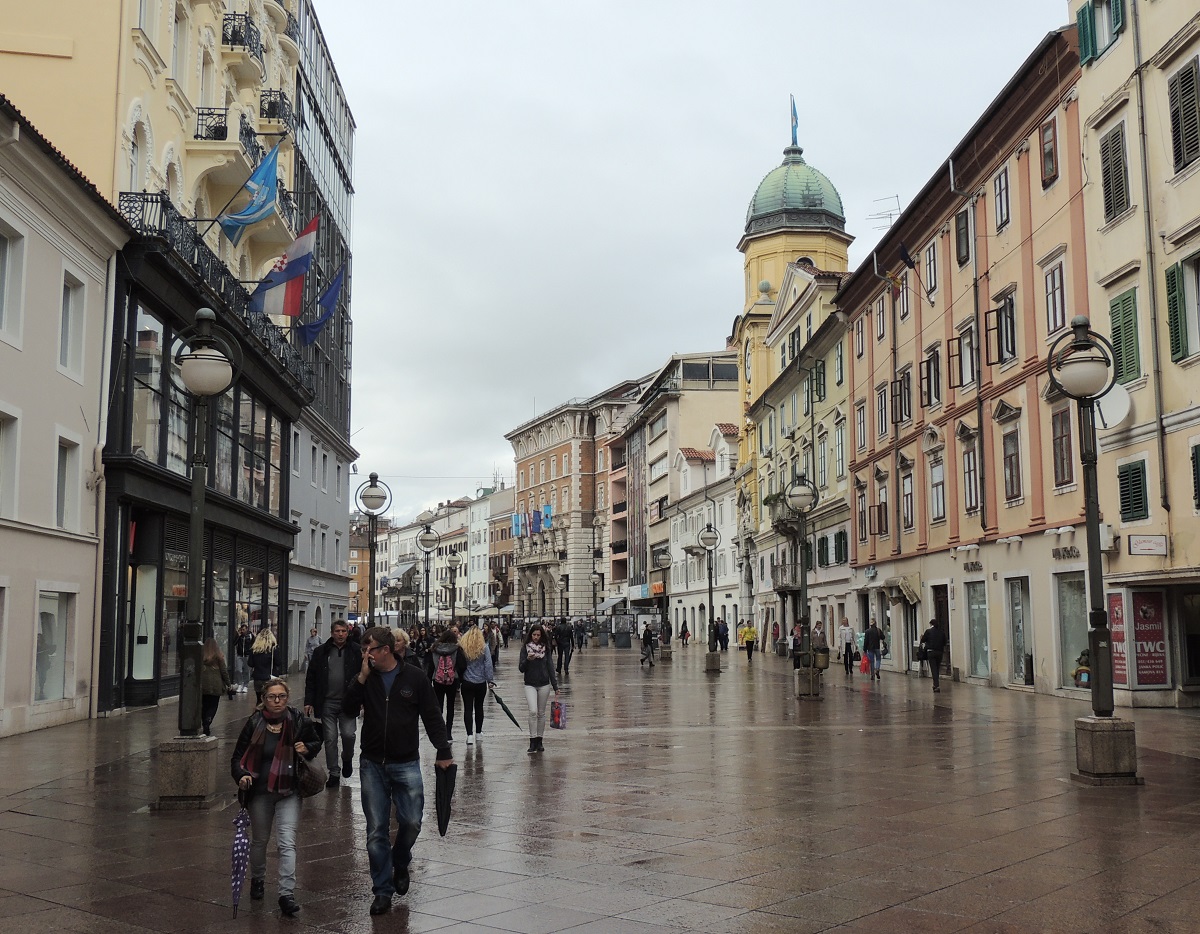
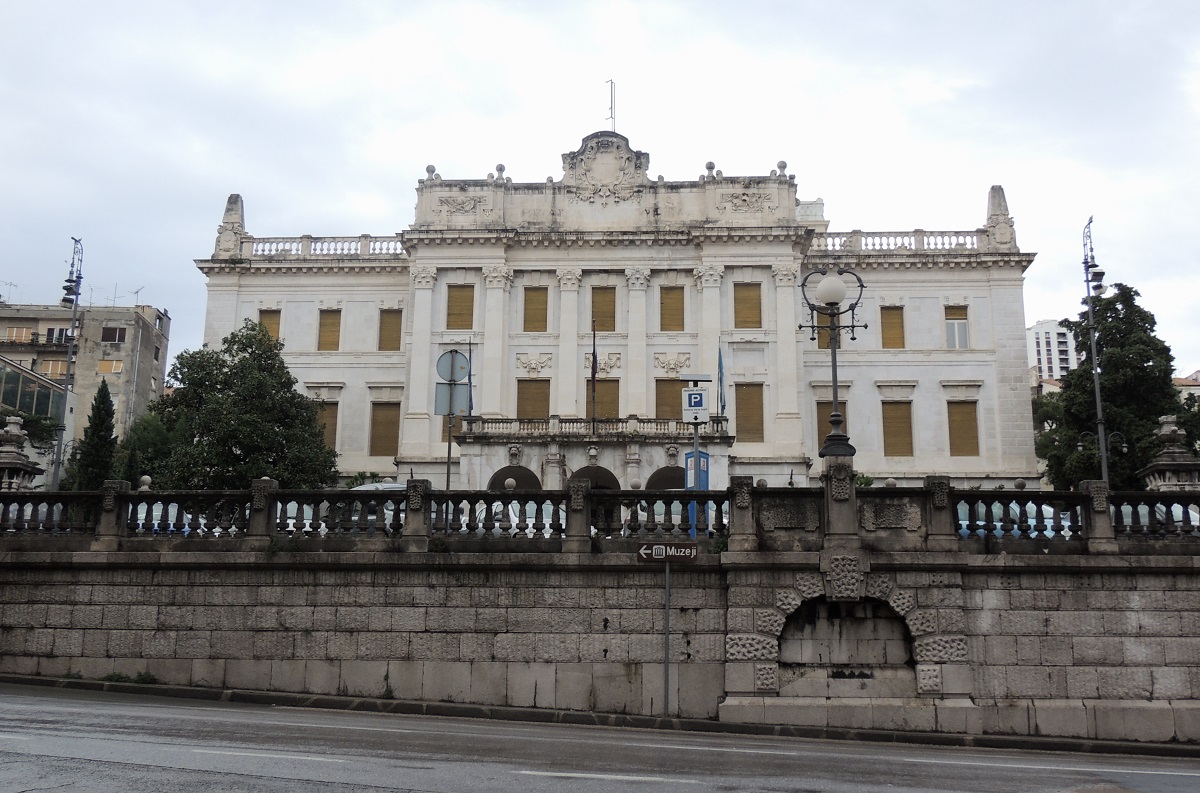
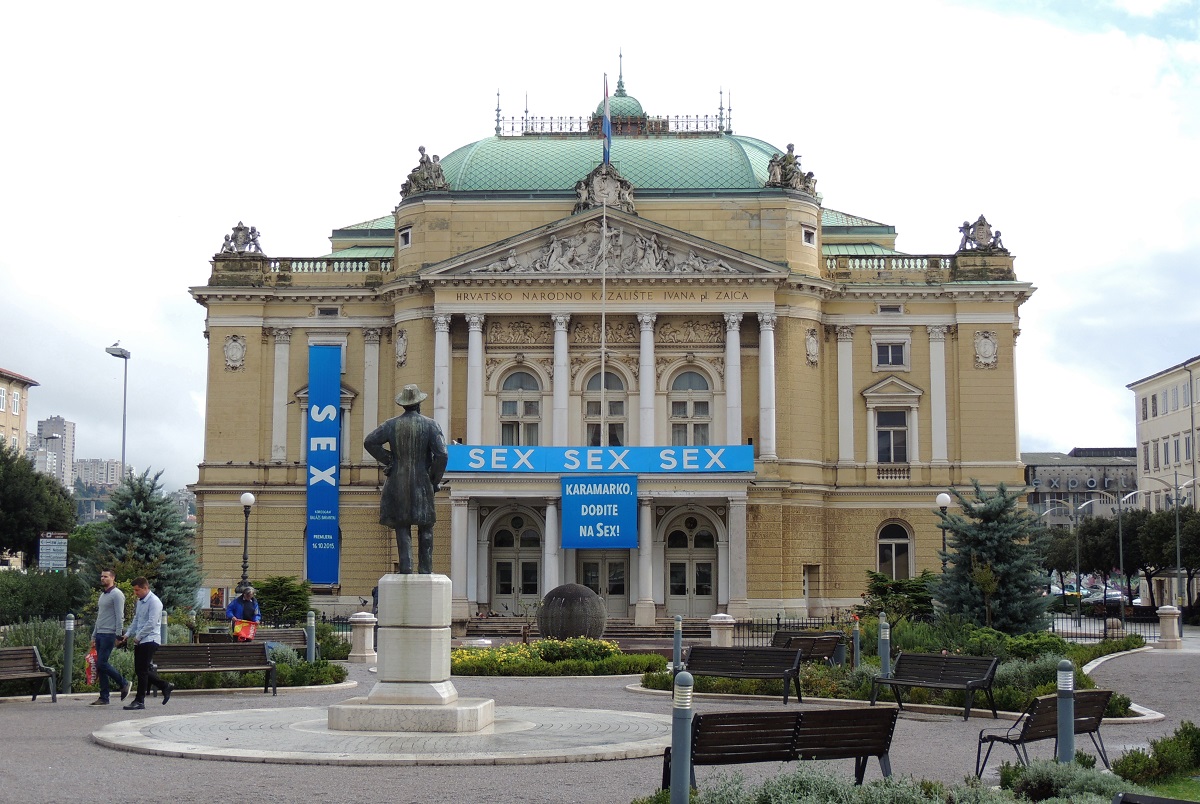
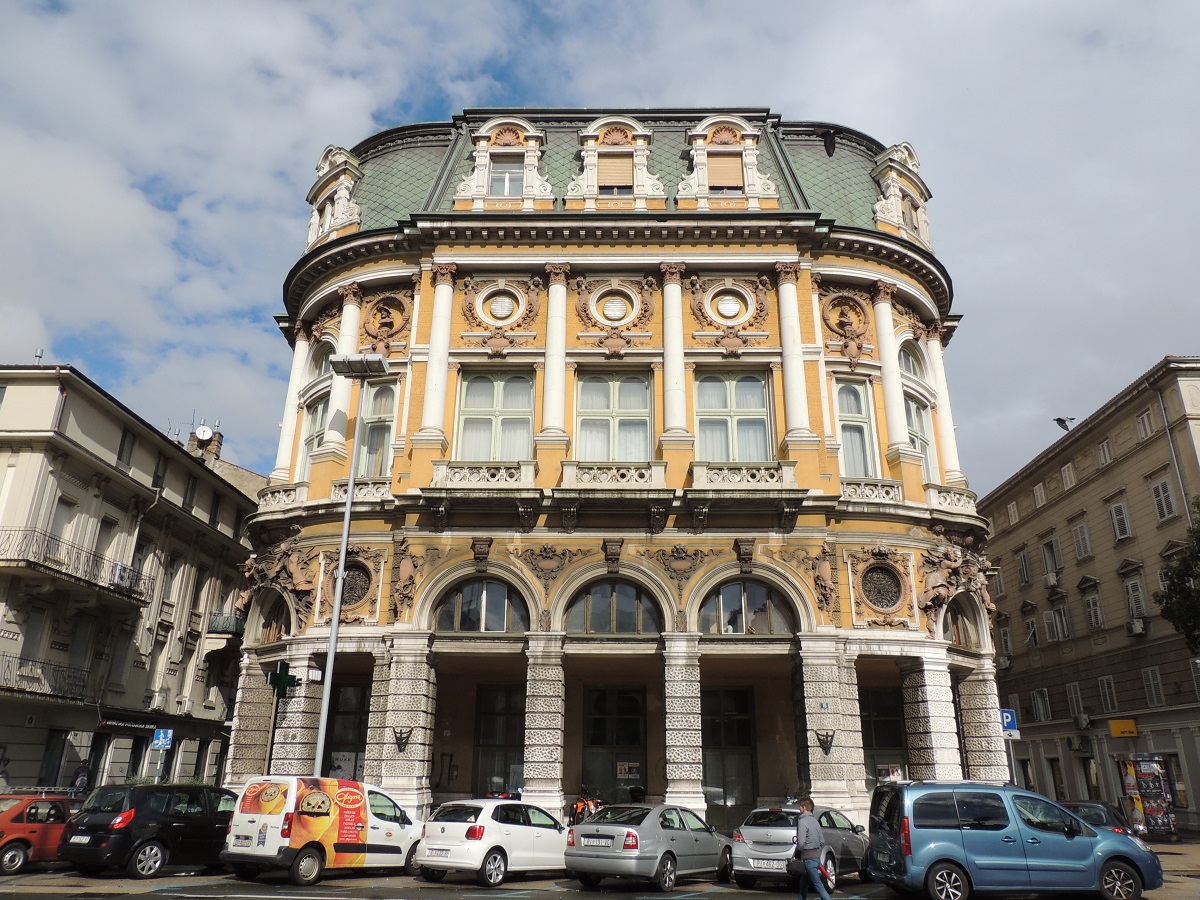
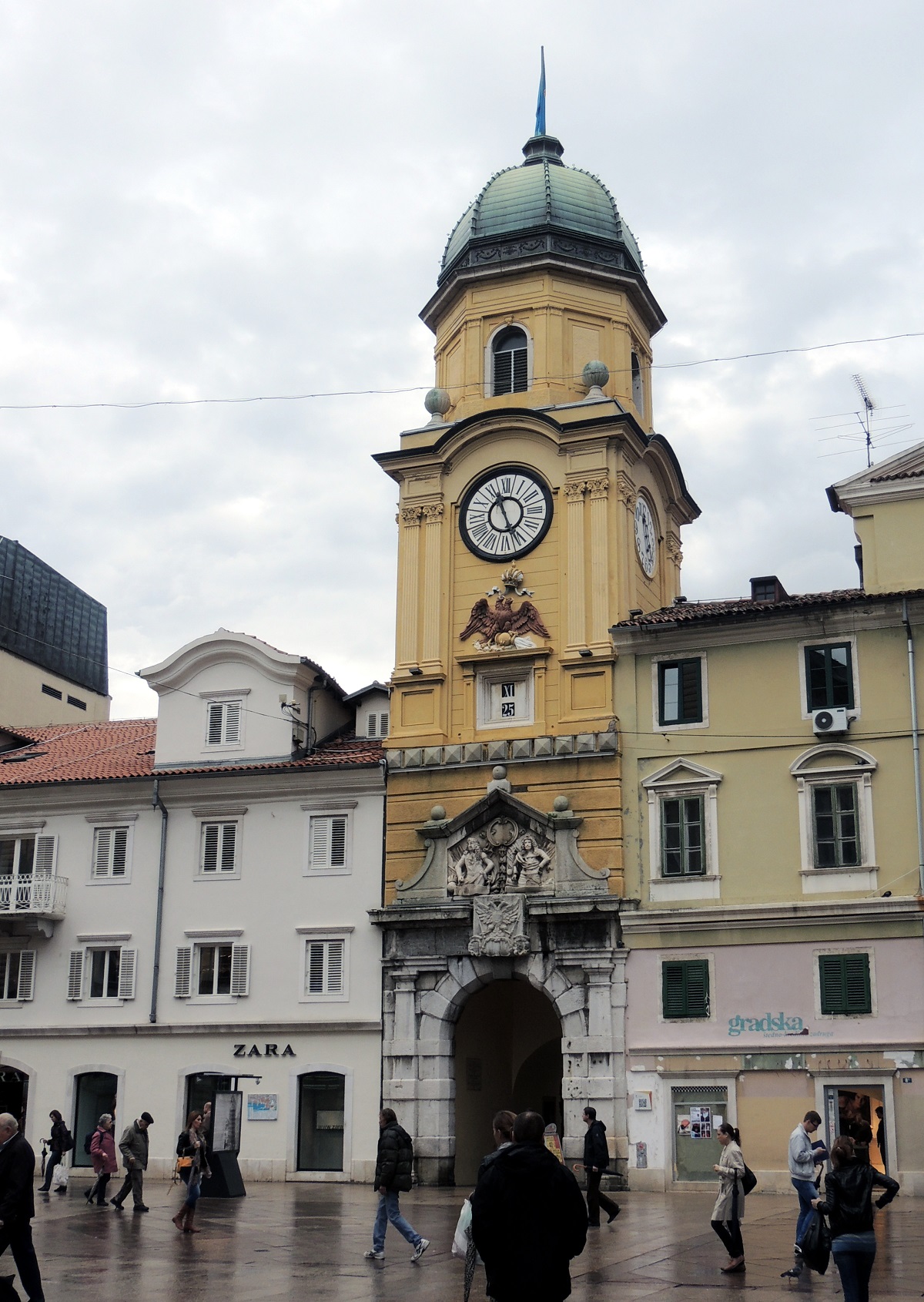

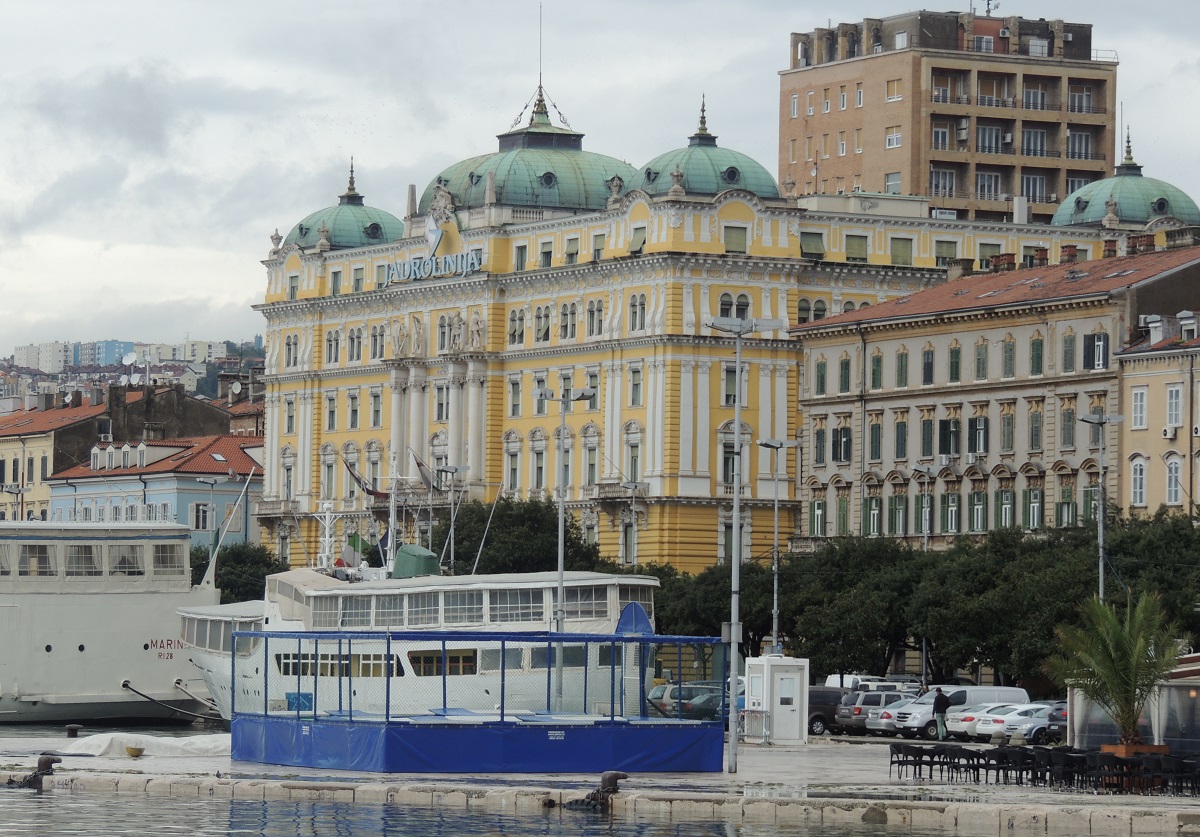
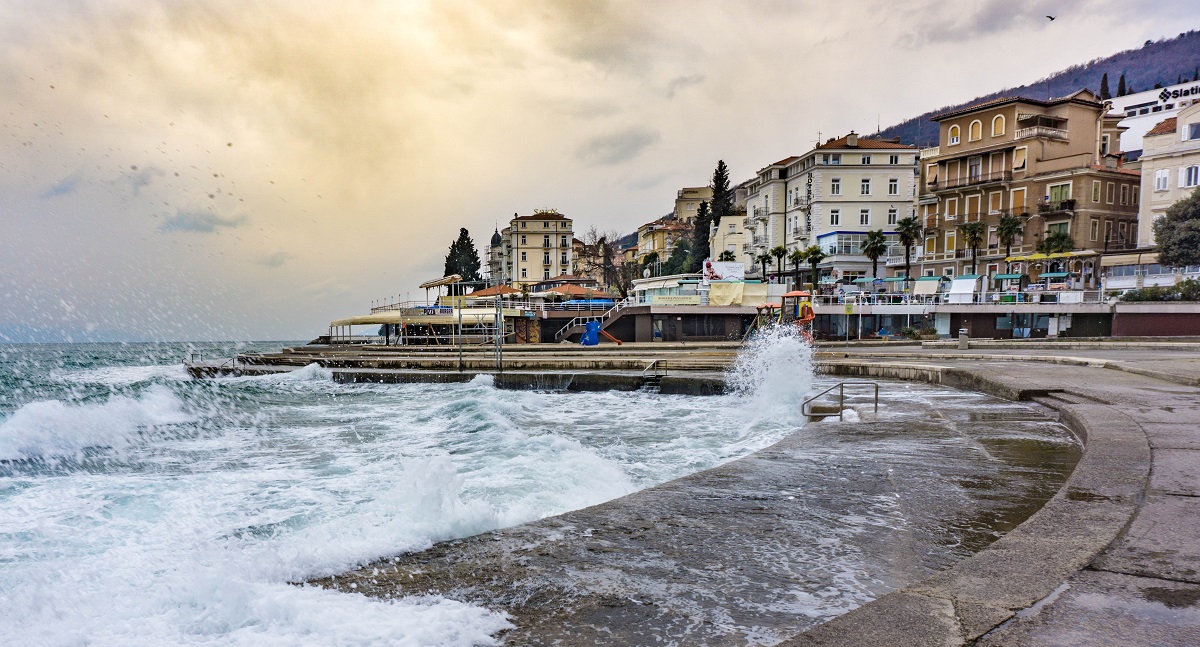
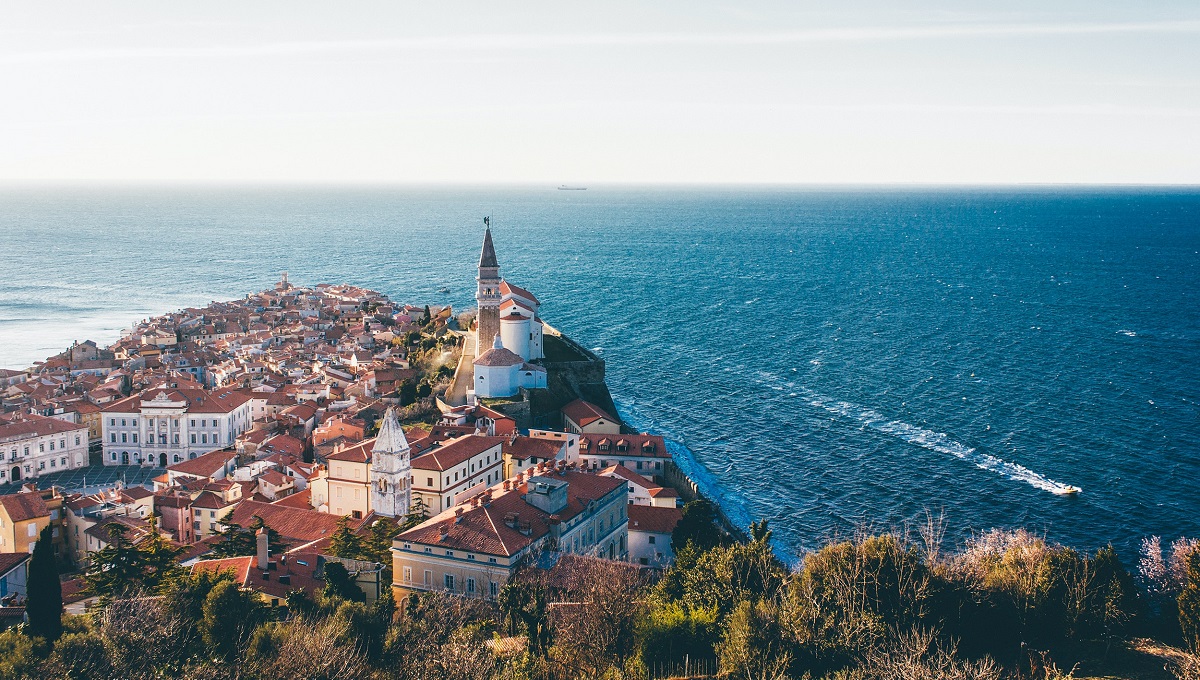
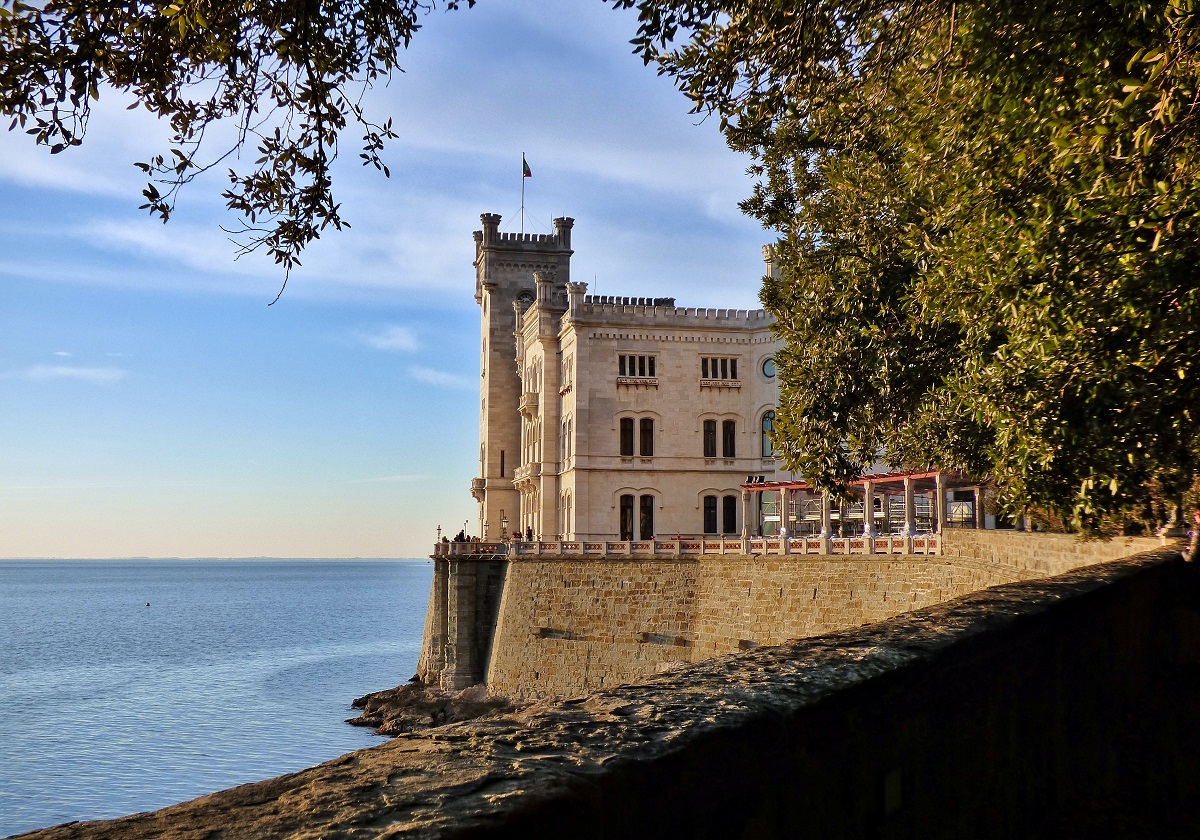
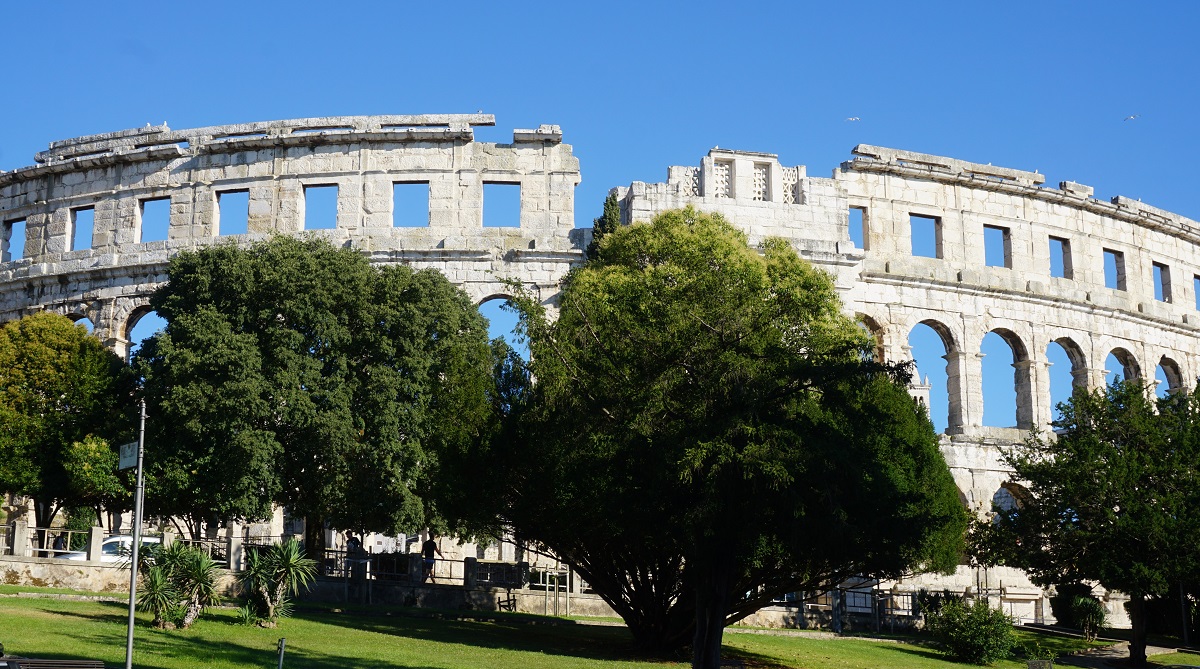
Rijeka’s Prehistory
The first modern settlement around present-day Rijeka was Celtic Tharsatica, located in the highlands of the Adriatic Sea with a harbor below. The Romans took over the place and expanded it as a city in the province of Dalmatia.
With the decline of the Roman Empire and the growth of the Byzantine Empire, the area around Tharsatica came to change rulers sometimes. For example, there were Goths, Byzantines and Lombards at the head of the city from the 400s.
Croats settled in the region from the 6th century, and they named the city Rika svetoga Vida, pointing out that the place was Sankt Veits town. However, time should pass before the city itself became Croatian.
In the German-Roman Empire of the 12th century, the area was called Merania, which indicated that it was an area along the coast. The Germanic power in the area was considered essential to avoid the spread of the Ventian Republic along the northern Adriatic.
The name Fiume eventually came into existence and the city evolved. It was led by counties as feudal lords until 1337, and during this time Fiume’s trade and general logistics were established. With only a limited connection to the Croatian hinterland to the east, traffic and trade occurred mainly over the sea and with Italian cities such as Ancona, Fermo and Venice.
Habsburg time
In 1399, the German Walsee family took over the region, and they ruled Fiume until 1465, when the genus Walsee became extinct. The area was then inherited by the Habsburgs who maintained control of Fiume for centuries.
With the Habsburgs came a new era of growth in Fiume, gaining the status of a refuge with the privileges that entailed. Fiume became part of the Duchy of Carniola in this connection, but as a sanctuary the city was directly subject to the German-Roman emperor and court. The city could, among other things, levy taxes itself and maintain its own legal system.
Venetian forces attacked and plundered the city in 1509, and subsequent attacks also came from the Muslim Ottomans, who never captured Fiume. The 16th century was also the period when a major building activity in the Renaissance and Baroque started.
In 1599, Fiume was separated from Carniola as a de facto independent city, although the duchy’s government continued to claim the city. Fiume was then ruled by a two-chamber system with a large council of 50 members and a small council of 25 patricians. The council captain was representative of the Habsburg supremacy. The form of governance had been manifested in 1530, and as a governing the form was maintained until the middle of the 19th century.
Maria Theresia and Hungary
In 1719 the ports of Rijeka and Trieste were given the status of free ports, which naturally created increased activity and trade. Among other things, the trade route to Venice developed considerably from 1725.
Maria Theresia came to the throne in 1740, and she ruled until her death in 1780. In 1779, Maria Theresia decided to allow Fiume to become part of Hungary with a regime directly under the Kingdom’s capital in Budapest. A governor was a local representative and Fiume was then Hungary’s only port city.
19th century industrialization
In 1804 Fiume became part of the Austrian Empire. The city had evolved quite rapidly over the centuries, and in the 19th century it was the most important port in the eastern part of the Habsburg Empire. There was also a naval base in the city that became the home of the Austro-Hungarian Naval Academy in the middle of the century.
During the period 1872-1896 Giovanni de Ciotta was mayor of Fiume, and during these years and generally in the latter half of the 19th century the city underwent rapid development. The port was expanded and several factories opened up in the city and its environs. It was among the world’s first torpedo factory in 1866 and an oil refinery in 1882.
Fiume was also connected to the Austria-Hungary rail network. It happened in 1873, and with the railroad the city was logistically linked more closely to other parts of the kingdom.
The city had gradually become a major port city with elegant business districts, shops, cafes and whatever else belonged.
From Hungary to the Free State
The beginning of the new century continued to bring great economic growth to Fiume. The population had risen from 21,000 in 1880 to 50,000 in 1910, and the port had become the fifth-largest in the Mediterranean after Marseille, Genoa, Naples and Trieste.
Much of the growth was due not least to many years of large Hungarian investments. There was a rivalry between Fiume and nearby Trieste, which belonged to Hungary and Austria respectively. The double monarchy sought to divide the sun and wind just by, among other things, placing orders for the fleet in both cities.
Austria-Hungary collapsed with the end of World War I, and Fiume’s situation became very unclear with many ethnic groups among the city’s inhabitants. Both Italy and the newly established kingdom of Serbia, Croatia and Slovenia claimed the city.
The slaves took over the city, but Allied forces from England, France, Italy and the United States joined Fiume in November 1918. Their presence created the opportunity to take the area’s status with the peace conferences in the wake of the end of the World War.
Italy claimed Fiume, with around 65% of Italians living in the city. Croats made up the majority of the rest of the population, and they also inhabited the areas around the city. Italian Gabriele d’Annunzio established a local government, but Italy, in respect of international agreements, would not annex the city. The result of this time was the establishment of the Free State of Fiume in 1920.
The Free State of Fiume was recognized by the League of Nations and by both Italy and the Yugoslav Kingdom, thus ensuring the city’s independent future. However, it took only four years before the political status changed. The fascists came to power in Italy and their ambitions included an annexation of Fiume. Italy and Yugoslavia signed an agreement in Rome in 1924. The agreement took effect from March 16, 1924, and with it Fiume became part of Italy and Sušak became part of Yugoslavia.
The Yugoslav Rijeka
Fiume was then Italian for twenty years. The trams ran in the city, which continued its development under Italian rule. However, the geographical location far from Italy and surrounded by a potential enemy quickly created challenges with the outbreak of World War II.
Partisans attacked Fiume from Yugoslavia, and the controlling German-Italian alliance retaliated against these attacks. In September 1943, Italy had to surrender to the Allied powers, and the result for Fiume was that Germany occupied the city, which became part of the region of the Adriatic region of Küstenland.
Towards the end of World War II, Fiume suffered numerous bombings due to its large port, refinery and weapons industry. It also came to a colossal blow on land in April 1945, with Yugoslav troops approaching the city, which was actively defended by not least 27,000 Germans. On May 3, the Yugoslavs invaded the city, leaving the fighting of the war in this place. In total, over half of Fiume’s buildings had been destroyed.
After the war, the Italian lands southeast of Trieste became part of Yugoslavia. The same was true of Fiume, who as part of the federal state of Croatia became Rijeka. At that time, there were about 66,000 Italians being forced into Italy or facing a tough time under the Stalinist-inspired rule of the Slavic Republic.
Rijeka was re-populated from many parts of Yugoslavia, creating the foundation for the Rijeka that is visited today. The 1950-1980s were a time when Rijeka was growing again; it became, among other things, Yugoslavia’s largest port city with the economic progress it brought.
After Croatian independence in 1991, Rijeka experienced a period of stagnation and closure of many of the industries that had previously characterized the city. As a port city, the city had been cut off from large parts of the natural hinterland that were no longer in the same land as Rijeka. The population has since fallen from about 165,000 to just under 130,000.
Today, Rijeka’s development is not least borne by the service industry and tourism, due to the good climate of the area and the location by the water, which is also an integral part of Rijeka’s urban life.
Overview of Rijeka
Istria and Kvarner are two of the most visited regions in Croatia, where great experiences and sights in culture, nature, shopping and gastronomy await. The main cities are Pula on the west coast of Istria and Rijeka in the Gulf of Kvarner.
Rijeka is the largest city in the region, and the elegant Korzo is the main shopping street, and it winds through the city center. Around Korzo there are several sights such as the city’s well known tower, whose passage leads to both the cathedral and excavations from Rijeka’s past as a Roman settlement.
About the upcoming Rijeka travel guide
About the travel guide
The Rijeka travel guide gives you an overview of the sights and activities of the Croatian city. Read about top sights and other sights, and get a tour guide with tour suggestions and detailed descriptions of all the city’s most important churches, monuments, mansions, museums, etc.
Rijeka is waiting for you, and at vamados.com you can also find cheap flights and great deals on hotels for your trip. You just select your travel dates and then you get flight and accommodation suggestions in and around the city.
Read more about Rijeka and Croatia
Buy the travel guide
Click the “Add to Cart” button to purchase the travel guide. After that you will come to the payment, where you enter the purchase and payment information. Upon payment of the travel guide, you will immediately receive a receipt with a link to download your purchase. You can download the travel guide immediately or use the download link in the email later.
Use the travel guide
When you buy the travel guide to Rijeka you get the book online so you can have it on your phone, tablet or computer – and of course you can choose to print it. Use the maps and tour suggestions and you will have a good and content-rich journey.
Beautiful Churches • Korzo • Adriatic Sea • Jadrolinija • Opatija
Overview of Rijeka
Istria and Kvarner are two of the most visited regions in Croatia, where great experiences and sights in culture, nature, shopping and gastronomy await. The main cities are Pula on the west coast of Istria and Rijeka in the Gulf of Kvarner.
Rijeka is the largest city in the region, and the elegant Korzo is the main shopping street, and it winds through the city center. Around Korzo there are several sights such as the city’s well known tower, whose passage leads to both the cathedral and excavations from Rijeka’s past as a Roman settlement.
About the upcoming Rijeka travel guide
About the travel guide
The Rijeka travel guide gives you an overview of the sights and activities of the Croatian city. Read about top sights and other sights, and get a tour guide with tour suggestions and detailed descriptions of all the city’s most important churches, monuments, mansions, museums, etc.
Rijeka is waiting for you, and at vamados.com you can also find cheap flights and great deals on hotels for your trip. You just select your travel dates and then you get flight and accommodation suggestions in and around the city.
Read more about Rijeka and Croatia
Buy the travel guide
Click the “Add to Cart” button to purchase the travel guide. After that you will come to the payment, where you enter the purchase and payment information. Upon payment of the travel guide, you will immediately receive a receipt with a link to download your purchase. You can download the travel guide immediately or use the download link in the email later.
Use the travel guide
When you buy the travel guide to Rijeka you get the book online so you can have it on your phone, tablet or computer – and of course you can choose to print it. Use the maps and tour suggestions and you will have a good and content-rich journey.





Similar to Rijeka Travel Guide